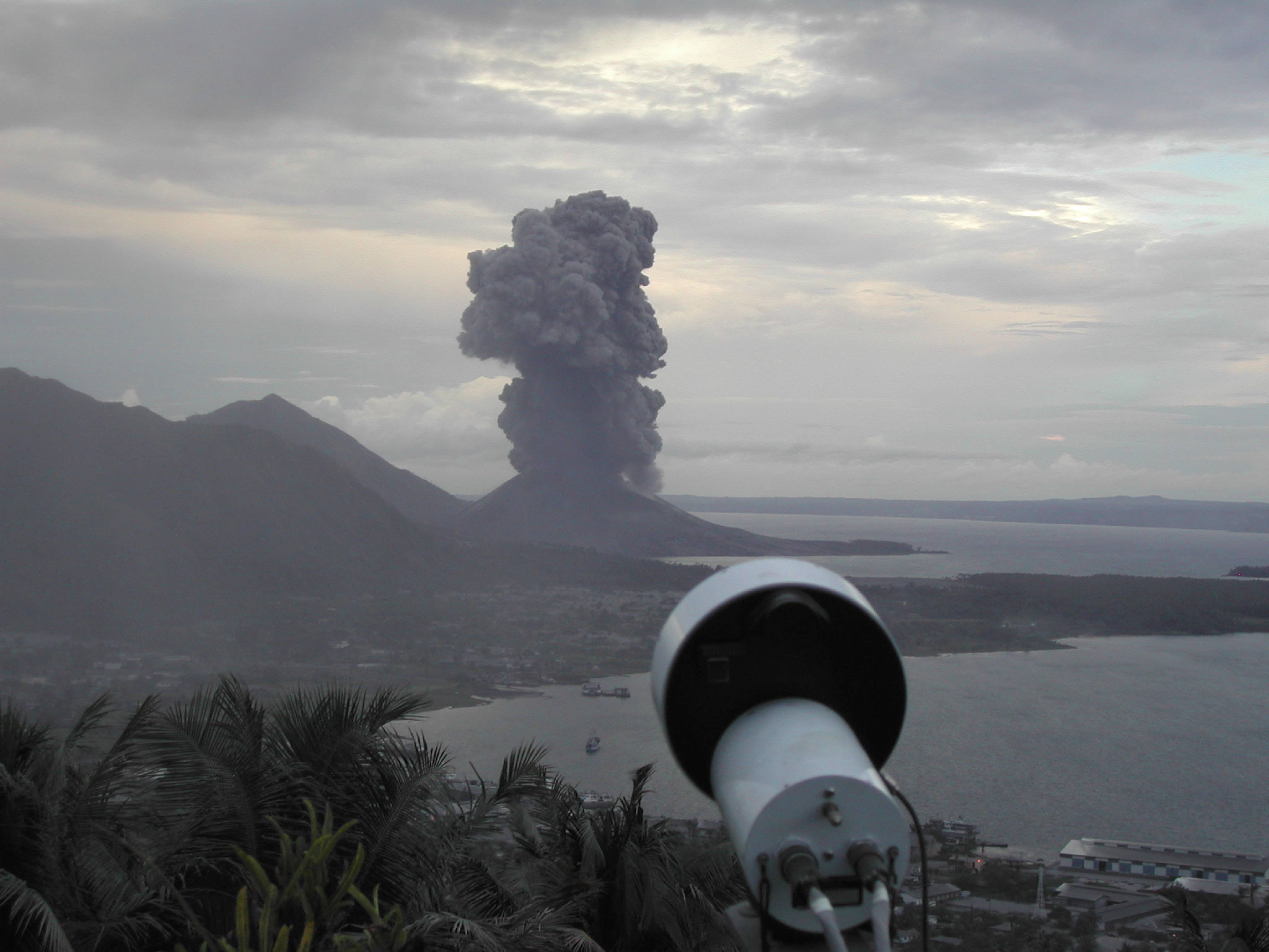Anthropogenic emissions
Anthropogenic emissions sources include gas and aerosol emissions from ships and industrial stacks. We can access satellite data and provide analyses of specific events or provide data for continuous monitoring of active sources. We have access to specialised infrared and ultra-violet imaging cameras using in-house algorithms to determine the concentrations of some polluting gases. SPcam is our dual-wavelength ultraviolet imaging camera designed and developed by AIRES specifically to monitor sulfur dioxide emissions from shipping, but it can also be used at industrial stacks and volcanoes. By using our Power Emission Rate Chart (PERC) we can provide estimates of the S-content in the fuel used by shipping. (See Ship Emissions Report).
Natural emissions
Natural emissions from volcanoes include SO2 gas that can cause adverse health effects and damage to vegetation and infrastructure. AIRES has developed a suite of miniature infrared cameras that can be deployed at volcanoes under hazardous conditions or carried by drones. mini-IRcam is an 8x8 bolometric detector designed to be deployed to volcanoes to generate a real-time alert when the volcano erupts. Because it uses IR radiation it has a 24/7 capability. These devices are very cost-effective and are aimed at rapid detection of volcanic eruptions. Our πLepton camera utilises the FLIR Lepton IR core (80x60 or 160x120 pixels) coupled to a Raspberry pi computer using our Python algorithms to determine geophysical quantities, such as plume rise, ash detection and SO2 quantification. Our software is open-source and we provide the operating code to our customers and collaborators.

